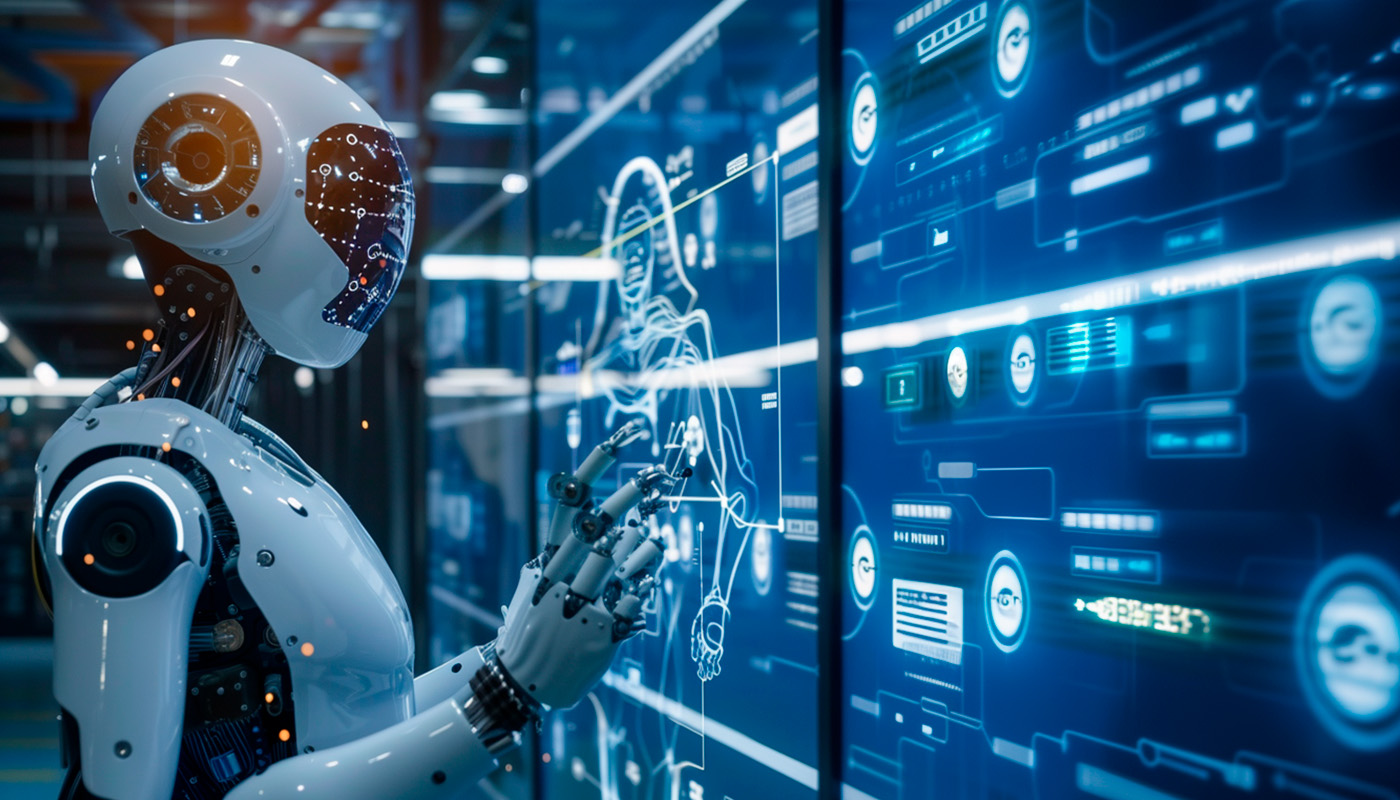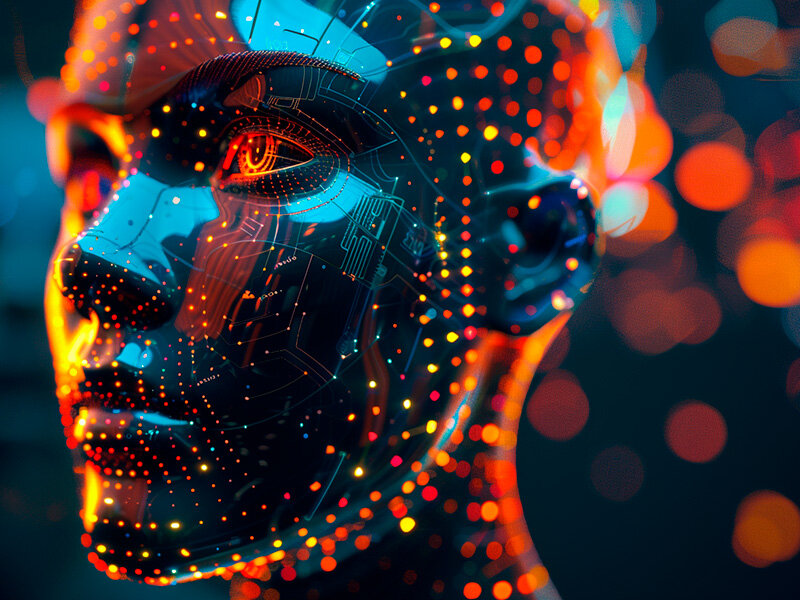As artificial intelligence (AI) continues to advance, it is having a profound impact on nearly every industry and field. That includes user experience and user interface (UX/UI) design.
Current AI tools
In this article we examine how we leverage AI for UX/ UI design and see how it is having a profound impact on nearly every industry and field. Current AI-driven tools have clunky, prompt-driven interfaces that are not very user-friendly. However, even these subpar tools have already demonstrated their ability to boost productivity, making businesses eager to incorporate them.
While the current adoption of AI applications by businesses has its merits, engineering and marketing-led designs often result in substandard user experiences. Thus leading to many current AI tools having poor usability. Generative AI systems like ChatGPT use text-based prompts for intent-based outcomes. One major usability downside is that users must be highly articulate to write the required prose text. This can be challenging for much of the population; articulating needs in writing is difficult, even at high literacy levels.
Additionally, the phrase “Do what I mean, not what I say” highlights that users often instruct the computer to perform the wrong action. Assigning complete control to the computer also has downsides, especially with current AI, which is prone to delivering erroneous results. When users do not understand how something was done, it can be harder for them to correct the problem.
We’re not there yet
While businesses may see some productivity gains from these AI tools, they fall far short of the potential benefits that a user-centric research and design approach could achieve. This is especially relevant as we expect many industry-specific AI tools to be rolled out in the next 2-3 years. In the meantime, users will be the ones who suffer the consequences of these poorly designed AI applications.
We need more research to find a potential solution. Successful AI user interfaces will likely incorporate a hybrid method, combining elements of intent-based outcome specification and aspects of the graphical user interface (GUI). GUIs have superior usability because they show people what is achievable rather than requiring them to articulate what they want. Thus, combining prompting with on-screen controls available to the user will improve usability.
Automating UX/UI design tasks
One of the most immediate applications of AI in UX/UI design is task automation. We can automate certain design processes that are repetitive or follow strict rules using AI algorithms, freeing up designers to focus on higher-level creative work.
Ideation is free with AI because it can generate as many ideas as desired at no extra cost. AI’s capacity for rapidly and cost-effectively churning out concepts is unmatched. The abundance of ideas from AI has led to a new reality where ideation is free. For any creative effort, the more ideas, the better, as quantity eventually becomes quality in creativity. AI can bulk generate as many ideas as one can want, and in contrast, human ideas require extensive effort to produce.
AI can help with generating ideas and concepts, structuring and interpreting data. For example, AI tools can aid designers in generating user personas, questionnaires for user interviews, analysing user insights and understanding patterns, asking for critiques, generating design layouts, colour palettes, and typography pairings based on established design principles and best practices.

Limitations of AI tools
The flip side to this infinite ideation is the increased need for curation and cherry-picking by humans or the design team. More options are nice, but they introduce the problem of managing abundance. Additionally, not all ideas produced by AI will be useful. The team will need to narrow down the many options to the few that have the potential for further exploration or implementation.
Another need for human judgement with AI is to catch “errors,” where AI makes false assertions with confidence. AI’s output needs to be subjected to the team’s review. Current AI also exhibits some bias because it reflects its training data, which come mostly from the internet. While the internet contains plenty of good information, it also has inaccurate and false information. Depending wholly on AI-derived design results and critiques can be dangerous. Many of its insights are wrong, despite often being argued in polished language referencing established design and usability principles. AI can be highly convincing and still be wrong so interpretations must be double-checked by the relevant team members’ expertise.
Real users
AI also cannot replace research with real users. It can give plenty of ideas for things to look for in a usability study or generate a questionnaire, but it cannot predict what the users or customers will do. People are unpredictable, and specific user groups are likely to have varying backgrounds, needs, and motivations than AI’s interpretation of a “typical” human — that’s the whole reason we conduct user research.
AI tools can help by significantly speeding up the initial design phase and provide a solid starting point for the design team to build upon. Picking out the correct relevant information along with selecting the right results from a bunch of different ideas spewed out by AI requires skill, judgement, and knowledge from a skilled team member. The team must then refine, tweak and develop the results further.

AI Tools we might incorporate in our workflow
These currently available tools can offer a lot for the UX/UI professional.
ChatGPT:
UX professionals use ChatGPT for writing or editing any UX copy, such as for elements like buttons, where AI helps keep the text succinct and to the point, polishing any written content, maintaining consistency in tone of voice, generating a summary, etc.
ChatGPT is also used to help with user research. With the correct prompts, it can help generate correctly worded interview questions and address leading questions. It can also analyse qualitative data received as survey responses or user feedback, and help generate meaningful insights by identifying and picking up on common themes and patterns. It can also generate content for personas, user scenarios, and user journey maps, and placeholder text for prototypes.
Some limitations are that ChatGPT, although a helpful tool, can be inaccurate and unreliable, and the information it provides needs to be validated. Some responses are generic, lack contextual understanding, and thus lack the creativity and depth needed, leading to less desirable and applicable suggestions.
Wondering:
Wondering is an AI-Tool that helps with user research. It can help generate studies for user research that follow a survey-based approach where users can choose to either record their answers or type them out. Wondering can make published studies multilingual and automatically detect the participant’s browser language, translating studies into English. You can send the study to over 120K participants all over the world, recruited by Wondering or privately sent via a link. It allows for multiple filters as screening criteria for demographics and other parameters. You can analyse answers and feedback received from the studies, and the AI helps collate it into valuable and rich insights.
Perplexity:
You can use AI search-engine tools such as Perplexity to conduct initial secondary research, information gathering, and understanding the subject matter or learning about a domain and any unfamiliar terms or jargon used by clients before interviews or after a client briefing. It’s also helpful for performing competitor analysis, helping create questionnaires, performing quick research on different topics, and generating summaries or creating checklists, generating content such as user personas, etc.
It enhances traditional web search engines such as Google by providing more meaningful results, concise answers, and suggesting follow-up questions and citing relevant sources along with related images and videos to aid the results. It also allows the user to either search across the internet, search only in published academic journals and papers, search from YouTube videos or Reddit, or generate from a computational knowledge engine or generate new content without searching the web.
Dovetail:
Dovetail is an AI tool that helps transform customer data and feedback into insights. It generates summaries and insights and helps make sense of data gathered from user interviews, usability testing, survey responses, product feedback, discovery conversations, and stakeholder interviews. It analyses data and picks out common themes and patterns and helps collate them into actionable insights.
Claude:
A general problem-solving conversational AI tool with advanced reasoning, vision analysis, code generation, and multilingual processing. It can be helpful for brainstorming ideas, analysing images and generating code for UI elements in HTML and CSS, turning images into structured JSON data, or debugging complex code bases. It’s also helpful for processing and analysing documents, helping generate questionnaires, performing quick research on different topics, generating summaries, and creating content such as user personas.

Humans and AI working together
AI will revolutionise how we approach UX/UI by automating tasks, enhancing personalisation, and enabling alternative forms of human-computer interaction. Despite its limitations, it’s clear that AI will play an increasingly significant role in shaping the future of UI/UX design.
By embracing AI while also maintaining a strong emphasis on human-centred design principles, we can create digital experiences that are not only efficient but also delightful, accessible, and deeply attuned to the needs and preferences of users.
Today, our digital experience is highly fragmented. We have to use many platforms and pay for each one separately. Each platform focuses on specific needs. This makes things complicated and inefficient.
The current fragmentation forces users to navigate multiple interfaces, each with its own paywall, learning curve and potential incompatibilities, leading to inefficiencies and frustrations.
The future of AI
As AI technology advances, it could integrate these disparate experiences into one seamless system. An advanced AI system could learn individual preferences, consolidate information and provide a personalised, streamlined experience that adapts to the user’s needs across various domains.
This integration would eliminate redundancies, reduce cognitive load, and ultimately deliver a more intuitive and user-friendly digital experience. Bringing everything together through AI integration has enormous benefits. It could revolutionise how we use digital technologies by providing a cohesive experience, instead of the currently fragmented landscape.
Humans and AI working together will be the future, yielding better productivity and creativity than either in isolation.
*All images featured in this post have been generated using paid for AI.
